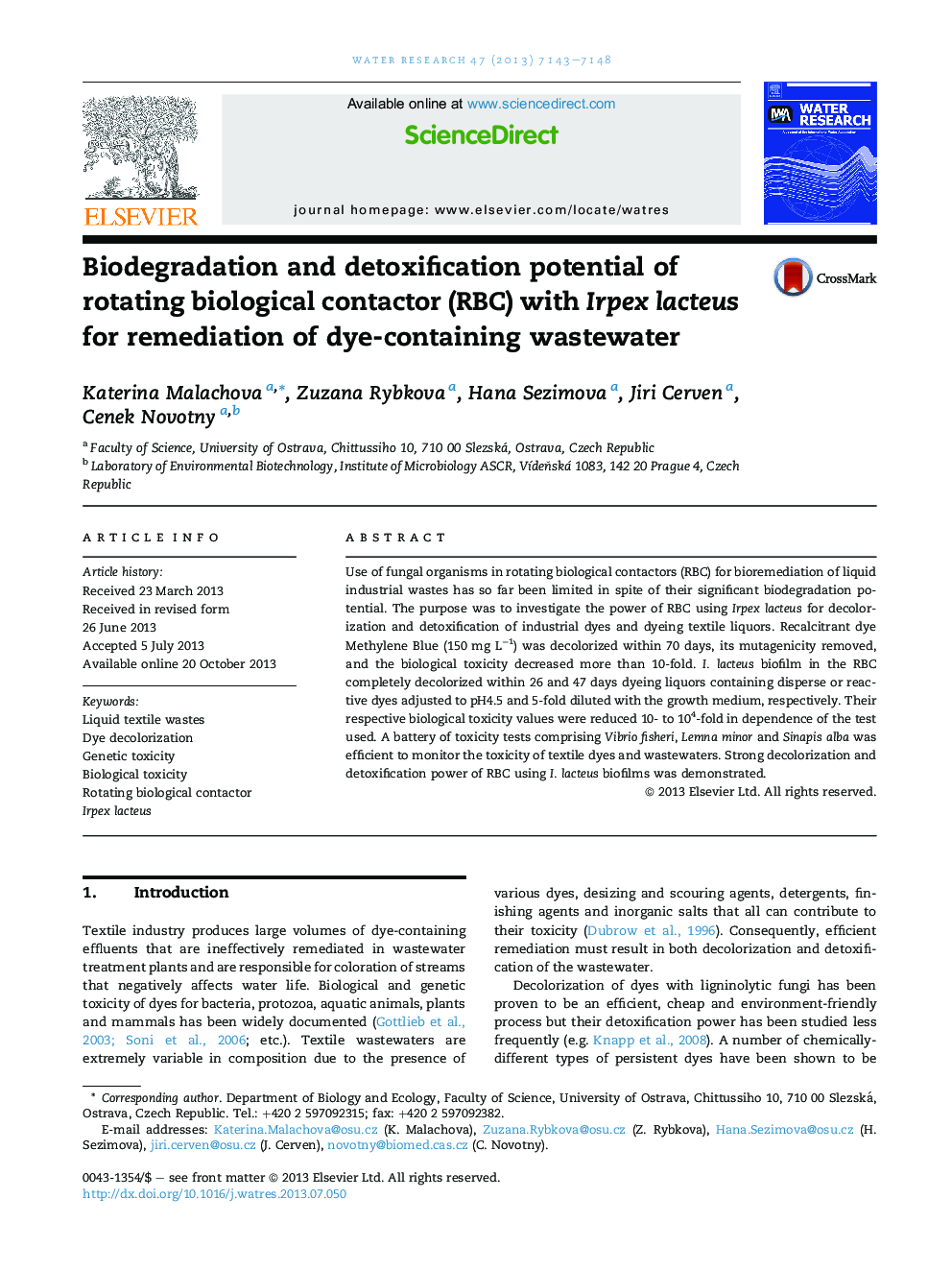| Article ID | Journal | Published Year | Pages | File Type |
|---|---|---|---|---|
| 4481752 | Water Research | 2013 | 6 Pages |
•RBC reactor with Irpex lacteus was used for treatment of textile wastewaters containing dyes.•The efficiency of biological detoxification of textile wastewaters was documented.•Degradation of Methylene Blue fully removed its genetic and biological toxicity.•A battery of tests for monitoring genetic and biological toxicity of textile wastes was established.
Use of fungal organisms in rotating biological contactors (RBC) for bioremediation of liquid industrial wastes has so far been limited in spite of their significant biodegradation potential. The purpose was to investigate the power of RBC using Irpex lacteus for decolorization and detoxification of industrial dyes and dyeing textile liquors. Recalcitrant dye Methylene Blue (150 mg L−1) was decolorized within 70 days, its mutagenicity removed, and the biological toxicity decreased more than 10-fold. I. lacteus biofilm in the RBC completely decolorized within 26 and 47 days dyeing liquors containing disperse or reactive dyes adjusted to pH4.5 and 5-fold diluted with the growth medium, respectively. Their respective biological toxicity values were reduced 10- to 104-fold in dependence of the test used. A battery of toxicity tests comprising Vibrio fisheri, Lemna minor and Sinapis alba was efficient to monitor the toxicity of textile dyes and wastewaters. Strong decolorization and detoxification power of RBC using I. lacteus biofilms was demonstrated.
Graphical abstractFigure optionsDownload full-size imageDownload high-quality image (231 K)Download as PowerPoint slide
